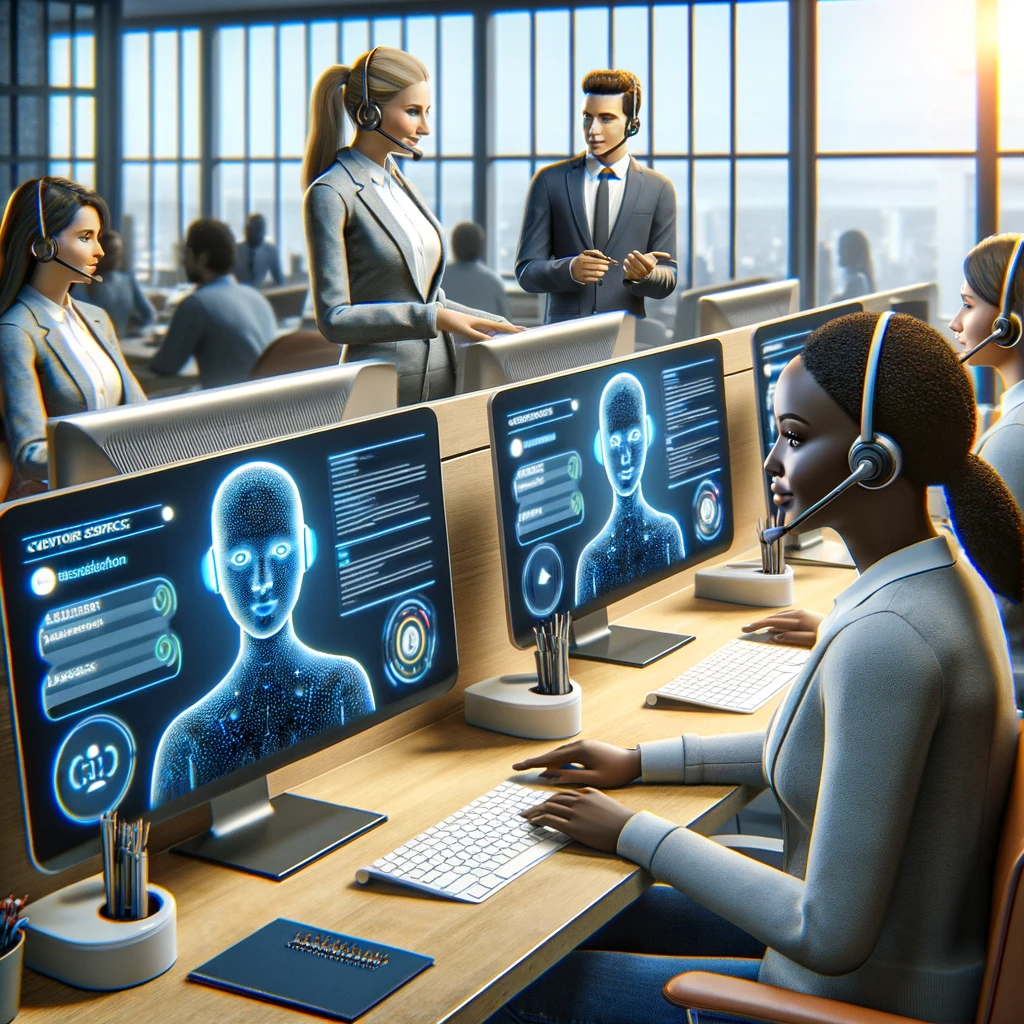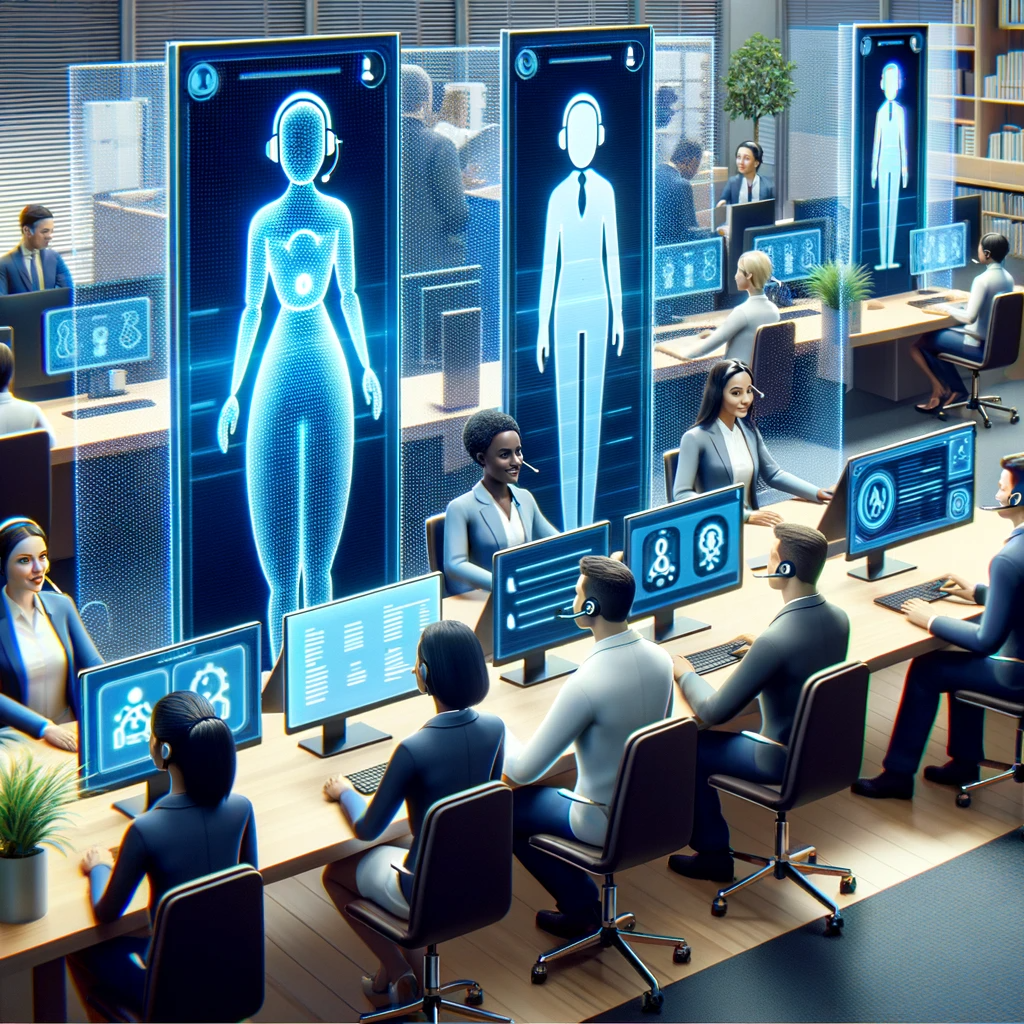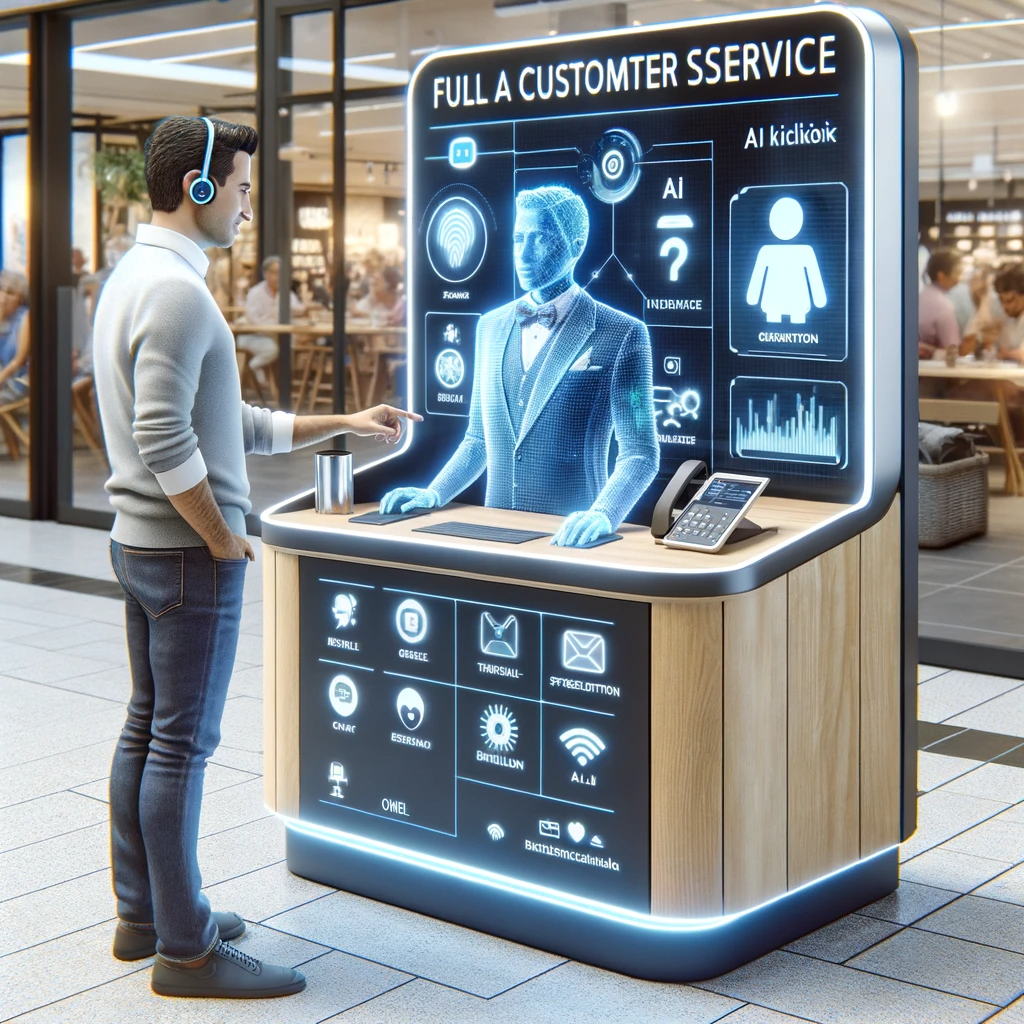In recent years, the realm of customer service has witnessed a transformative shift, largely driven by the advent and integration of Artificial Intelligence (AI). Where once human representatives were the sole bearers of customer interactions, now AI-driven chatbots and virtual assistants are increasingly taking center stage. This evolution marks a significant change in how businesses approach customer service – from purely human-led interactions to technologically advanced, AI-driven solutions.
The integration of AI into customer service has been gradual yet impactful. Initially complementing human efforts, AI has rapidly evolved to take on more complex tasks, offering instant responses and personalized assistance to customers. This transition raises a pivotal question that stands at the forefront of both technology and customer relations: Will AI-driven chatbots and virtual assistants eventually replace human customer service representatives?
As we delve into this question, we explore the capabilities of AI in customer service, its advancements, the balance it maintains with human touch, and the potential future of this symbiotic relationship. This article aims to dissect the evolving landscape of customer service in the age of AI, examining whether AI is poised to become the new face of customer interaction or if it will remain an aid to human-driven service.

The Evolution of AI in Customer Service
The customer service landscape has undergone significant transformations over the decades, especially with the introduction of Artificial Intelligence (AI). Historically, customer service was predominantly a human-driven endeavor, relying on direct human interaction, whether in person, over the phone, or via email. The advent of the internet and digital communication platforms further expanded these channels. However, the introduction of AI marked a new era.
AI in customer service began with simple automated systems, like Interactive Voice Response (IVR), which could handle basic customer queries. The development of AI technologies, particularly in Natural Language Processing (NLP) and machine learning, led to the emergence of more sophisticated tools such as chatbots and virtual assistants. These AI-driven solutions were designed to simulate human-like interactions, enabling them to handle a wider range of customer service tasks more efficiently.
The early adoption of AI in customer service settings saw mixed responses. Initial chatbots were often limited in functionality, handling only basic inquiries and frequently directing users to human representatives for more complex issues. Over time, as AI technology advanced, these systems became more capable, leading to broader acceptance and integration into customer service strategies.
Capabilities of AI in Customer Service
Currently, AI in customer service is capable of a wide range of functions. Modern AI systems can handle a variety of customer queries, provide detailed product information, and even resolve common issues. Thanks to advancements in NLP, these chatbots and virtual assistants can understand and process natural human language, enabling them to interact with customers in a more engaging and effective manner.
AI-driven tools in customer service can also personalize interactions based on customer data, offering tailored recommendations and solutions. This personalization enhances customer experience, making interactions more relevant and efficient. Moreover, AI systems are capable of operating 24/7, providing constant support without the limitations of human working hours.
Examples of successful AI implementations in customer service are numerous. Major companies across various sectors, from e-commerce to banking, have integrated AI chatbots that effectively handle thousands of customer interactions daily, reducing response times and improving customer satisfaction.
Comparing AI and Human Customer Service
When comparing AI customer service to human representatives, each has its own set of strengths and weaknesses. AI excels in handling a high volume of simple, repetitive queries quickly and consistently. It can process and analyze large datasets to identify trends and common issues, enabling businesses to improve their services.
However, AI falls short in understanding the nuances and emotional subtleties of human communication. Complex issues that require empathy, creative problem-solving, and emotional intelligence are areas where human representatives have an advantage. Customers often prefer human interaction for complicated or sensitive matters.
Customer preferences and responses to AI vs. human service can vary based on the context of the interaction and the demographic of the customer. While some customers appreciate the speed and efficiency of AI responses for straightforward issues, others may find AI interactions less satisfying when seeking personalized, empathetic engagement. This highlights the importance of a balanced approach, where AI and human customer service complement each other’s strengths.

Challenges and Limitations of AI in Customer Service
While AI has made significant strides in customer service, it is not without its limitations and challenges. One major limitation is AI’s current inability to fully comprehend complex queries and emotional nuances. AI systems, despite advancements in natural language processing, often struggle with understanding context, sarcasm, and the subtleties of human emotion. This can lead to unsatisfactory customer experiences, especially in situations requiring empathy and deep understanding.
Developing advanced AI for customer service also presents technical challenges. Creating systems that can accurately and efficiently handle a wide range of customer interactions requires substantial investments in data collection, machine learning models, and ongoing training and maintenance. Additionally, these systems need to be adaptable and flexible enough to evolve with changing customer needs and business models.
Ethical considerations and customer privacy concerns are paramount when integrating AI into customer service. The use of AI often involves collecting and analyzing large amounts of personal data, raising questions about data security, consent, and transparency. Businesses must navigate these ethical challenges carefully to maintain customer trust and comply with data protection regulations.
The Future of AI and Human Collaboration in Customer Service
The future of AI in customer service is likely to see a continued trend towards more sophisticated and nuanced applications. Advancements in AI technology could lead to systems that better understand and respond to complex customer needs and preferences, potentially providing even more personalized and efficient service.
However, rather than replacing human customer service representatives, AI is more likely to complement them. A hybrid model, where AI handles routine queries and escalates more complex issues to human representatives, could provide an optimal balance. This collaborative approach would leverage the efficiency and scalability of AI while retaining the empathetic and nuanced understanding of humans.
Integrating AI and human service in customer care also opens opportunities for more creative and innovative customer service strategies. AI could provide representatives with real-time information and insights, enhancing their ability to resolve issues and improve customer satisfaction.

Conclusion
The exploration of AI’s role in customer service reveals a landscape where technology and human skill sets converge. AI brings efficiency, scalability, and data-driven insights, while human representatives offer empathy, creativity, and complex problem-solving. The balance between AI automation and the human touch is key to creating a customer service model that is both efficient and genuinely responsive to customer needs.
As we look towards the future, intriguing questions arise: How will AI continue to evolve in the realm of customer service? Can AI develop to a point where it truly understands human emotion and subtlety? And most importantly, how can businesses best integrate AI and human talents to create a customer service experience that is not just efficient but also genuinely engaging and satisfying? The answers to these questions will shape the future of customer service in an increasingly digital world.
